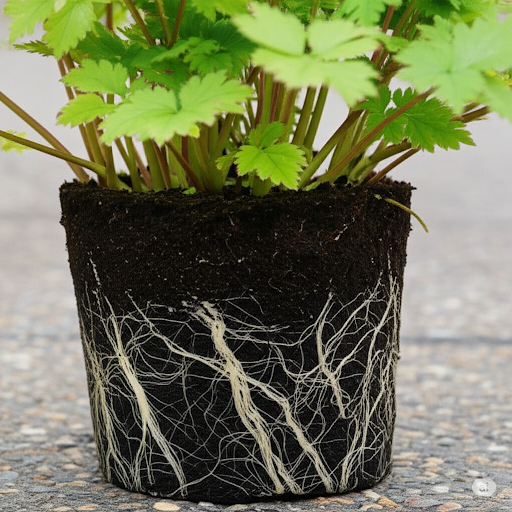Potted Astilbe: What Soil Do They Need? Choosing the Best Potting Mix for Container Success
Astilbe (often called False Spirea) is a beloved perennial in many shade gardens, cherished for its vibrant, feathery plumes of flowers and attractive, fern-like foliage. While they thrive in moist, shady borders, growing Astilbe successfully in containers presents a unique challenge, primarily centered around providing the right soil environment. Unlike garden beds, pots dry out faster and offer limited space, making your choice of potting mix critical.
So, what special soil requirements does container-grown Astilbe have, and what type of potting mix should you use? Let's dig in.
Why Soil Matters So Much for Potted Astilbe
Astilbe naturally grows in woodland environments where the soil is consistently moist but well-drained, rich in organic matter, and often slightly acidic. When confined to a pot, replicating these conditions is essential for their survival and bloom performance.
The main challenges with standard potting soil or using garden soil in containers are:
- Drainage vs. Moisture Retention: Astilbe hates drying out. They need consistent moisture. However, soggy, waterlogged soil leads rapidly to root rot, a common killer of container plants. The soil needs to hold onto moisture without becoming waterlogged.
- Nutrient Availability: Container plants rely entirely on the soil you provide for nutrients. A good potting mix needs to have or be amended with enough organic matter to support healthy growth.
- Aeration: Roots need oxygen. Compacted soil or soil that stays too wet deprives roots of air, leading to stress and decline.
Essential Soil Requirements for Container Astilbe
Based on their natural habitat and the challenges of container growing, potted Astilbe needs a soil mix that offers:
- Excellent Drainage: Excess water must be able to flow freely from the bottom of the pot.
- Good Moisture Retention: The soil needs to hold onto enough moisture between waterings to keep the roots happy.
- Rich in Organic Matter: This improves soil structure, helps retain moisture and nutrients, and provides a slow release of food.
- Slightly Acidic pH: Astilbe generally prefers a soil pH between 6.0 and 6.5.
Choosing and Creating the Best Potting Mix
Given the above requirements, you cannot simply use soil dug from your garden bed in a pot. Garden soil compacts too easily in containers, leading to poor drainage and aeration.
The ideal solution is a high-quality, well-amended potting mix.
Here's what to look for and how to achieve the perfect blend:
Start with a High-Quality Potting Mix: Purchase a premium potting mix specifically designed for containers. These mixes are typically lighter and more aerated than garden soil, often containing peat moss or coco coir, perlite, and composted materials. Avoid anything labeled "garden soil" or "topsoil."
Enhance with Organic Matter: To boost moisture retention, nutrient content, and mimic Astilbe's preferred rich environment, blend in additional organic material.
- Compost: Well-rotted compost or aged manure is excellent. It adds nutrients and improves soil structure.
- Peat Moss or Coco Coir: These materials are fantastic for holding moisture and also help slightly lower the pH, which Astilbe appreciates.
Improve Drainage and Aeration: Even good potting mixes can benefit from extra help with drainage, especially for moisture-sensitive roots.
- Perlite or Vermiculite: Adding a generous amount of perlite (small white volcanic rock) or vermiculite (expanded mica) will create air pockets in the soil, preventing compaction and ensuring roots get oxygen while allowing excess water to drain away.
Suggested Mix Combination (Approximate):

While exact ratios can vary, a good starting point is to take your high-quality potting mix and amend it by blending in:
- 1 part Compost or Aged Manure
- 1 part Peat Moss or Coco Coir (if the potting mix doesn't already contain a lot)
- 1 part Perlite or Vermiculite
Mix everything thoroughly before filling your containers. The final mix should feel light and airy, drain freely when watered, but still feel like it holds onto moisture.
Beyond the Soil: Other Container Care Tips
Even the best soil needs proper care:
- Watering: Astilbe needs consistent moisture. Check the soil frequently, especially during warm or windy weather. Water thoroughly until water drains from the bottom. Never let the pot dry out completely.
- Fertilizing: A potting mix with compost provides some nutrients, but container plants benefit from feeding. Use a balanced liquid fertilizer diluted to half strength every 4-6 weeks during the growing season, or incorporate a slow-release granular fertilizer into the mix at planting time.
- Pot Size: Use a pot large enough to accommodate the plant's root system and provide sufficient soil volume to retain moisture.
Conclusion
Growing Astilbe in pots is rewarding, but success hinges on providing the right soil. By understanding their need for a mix that balances consistent moisture retention with excellent drainage, and by choosing or creating a potting mix rich in organic matter and enhanced with amendments like perlite, you can ensure your container-grown Astilbe thrives and produces its stunning blooms season after season.

Comments
Post a Comment